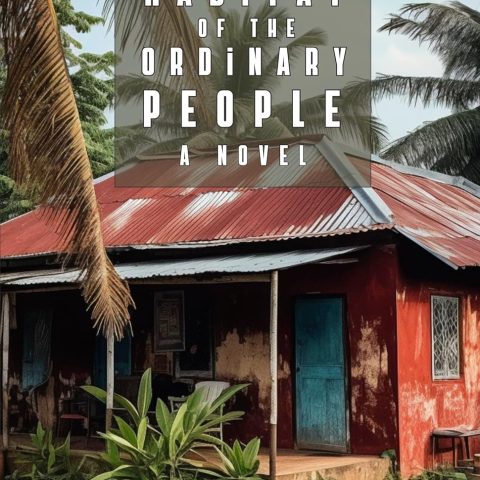Beyond Bob Marley and Beach Resorts
By D. Nicole Clarke
Friday, October 20, 2006:
When people hear that I’m from Jamaica, they smile and do bad Bob Marley imitations. I cringe. Even though we’re a diverse country built by slaves and indentured servants from Africa, China, India and Wales, we seem to be known mostly for the legendary reggae musician and breathtaking beaches.
However, there’s a more complex and authentic Jamaica to see.
Originally populated by the Arawak Indians (Tainos), Jamaica was claimed by Spain after Christopher Columbus sailed here in 1494. In 1655, the British captured the island from the Spaniards and turned it into a British colony.
Lush mountains, breathtaking waterfalls, sophisticated golf resorts and stunning sand strands mean that there is a vacation for every taste and style.
The education system is good and the health service is very functional. Jamaica is blessed with natural amenities. Its mountains reach more than 7,000 feet and its soil will grow almost anything.
Although Kingston is the capital and the largest city, it doesn’t attract the visitors that Montego Bay, Ocho Rios or Negril do. Ocho Rios is also now a bustling cruise port. Many visitors choose to go the all-inclusive route in Jamaica.
Exploring Jamaica is easy since it’s a small country, but driving the rugged, winding, potholed back roads can be exasperating. To bypass the pedestrians, goats and cows that tend to dart into your path, take the new highway that was completed in 2000.
The Wicked City of Port RoyalFor the best seafood on the island, Jamaicans go to Port Royal, a small fishing village that’s a short drive or a 20-minute ferry ride from Kingston.
In the 17th century, so many brothels, gambling dens and pubs sprang up in Port Royal that the Roman Catholic Church condemned it as the “the wickedest city in Christendom.” Pirates led by Henry Morgan brought their ill-gotten gains to trade.
In one for the Catholics, Jamaica’s only earthquake sent the heathens to a watery grave in 1692, killing 2,000 people and sinking all the ships in the harbor.
Plans are underway to develop the town for divers, and as a port of call for cruise ships, complete with actors in period costume. The town can be explored on foot; sites include the impressive Fort Charles, where cannons point out to sea. There’s also a maritime museum, which houses artifacts dredged up from the sunken city, and a naval hospital from 1819 made of stone and cast iron.
The Calabash Literary FestivalThe only international literary festival in the English-speaking Caribbean, Calabash aims to nurture world-class writing. The three-day spring festival of readings, music and other forms of storytelling is an annual literary extravaganza. Recent attendees include the Nobel laureate, Derek Walcott, the critically- acclaimed poet, Linton Kwesi Johnson and Diana Abu-Jaber.
Calabash is earthy, inspirational, daring and diverse. It’s held at Treasure Beach in St. Elizabeth Parish. All festival events are free and open to the public.
�
Jamaican poet, Opal Palmer Adisa (right) at Calabash
The Ruins of New SevilleNew Seville is one of Jamaica’s most significant historical sites. Founded in 1509, it was Jamaica’s first Spanish capital. Columbus’ son Diego lived there. His great house, now a museum, contains Spanish carvings, ceremonial Taino bowls, African pots, agricultural tools and other relics.
Walking the Maroon TrailWhen the Spanish came under attack by the British in the early 17th century, they freed their slaves and fled the island. The former slaves became the legendary Maroons. You can visit their old haunts in the Blue Mountains.
This preserve is one of few wild areas in the West Indies, with a terrain of caves and sinkholes carved by nature in limestone. Take a tour to Accompong, a Maroon village in the Cockpit Mountain. Descendents of the first freedom fighters will guide you through a day in a Maroon’s life, and feed you a buffet lunch.
Rose Hall Great HouseRose Hall Great House is a famed 1780s Jamaican plantation house. The splendid Georgian mansion sits atop a hillside eight miles east of Montego Bay. It has beautiful original antiques, and its well-manicured lawns sweep down toward the sea. The house was occupied by Frenchwoman Annie Palmer, who was known as the White Witch of Rose Hall. Palmer was supposedly a voodoo practitioner who murdered three of her husbands. She was strangled by one of her slaves, and local legend says that her ghost haunts the house.
Herbert Lisser told her story in fictionalized form in his 1958 book “The White Witch of Rose Hall.” Rose Hall is located across the highway from the Wyndham Rose Hall resort.
Less Touristy BeachesFor some good beaches not overrun by tourists, head to Port Antonio, and choose Frenchman’s Cove, San San beach or the Blue Lagoon. Frenchman’s, a spectacular little beach with an emerald and azure ocean, is surrounded by rocky cliffs alongside a cool mountain stream. It’s ideal for picnics. Nearby are San San, a narrow strip fronting a broad bay with decent snorkeling, and the Blue Lagoon, where lush foliage surrounds the stunning aquamarine ocean. Haven’t you heard of this place? You have: It’s where Brooke Shields came to shoot the movie “Blue Lagoon.”
If You GoPort Royal information: 876-929-9200New Seville: 876-972-9407Maroon Trail: www.heritageja.comRose Hall Great House: Open daily from 9 a.m. to 6 p.m., admission $15. 867-953-2341.Calabash literary festival: www.calabashfestival.org
D. Nicole Clarke is a journalism student at New York University. She can be reach at dns3@nyu.edu
Please e-mail comments to comments@thenewblackmagazine.com
�
Send to a friend | �
View/Hide Comments (0) | �





